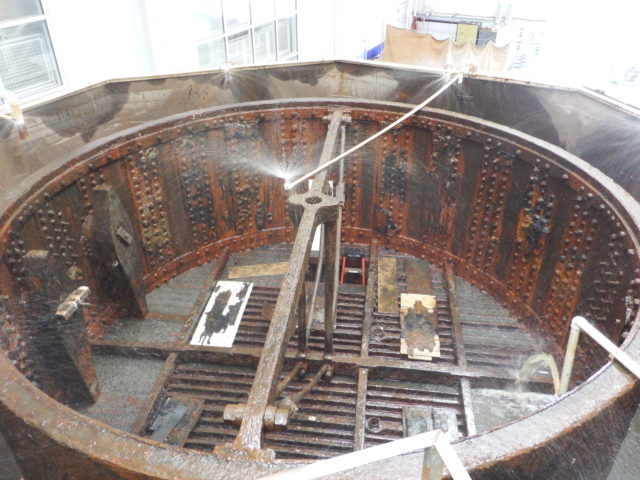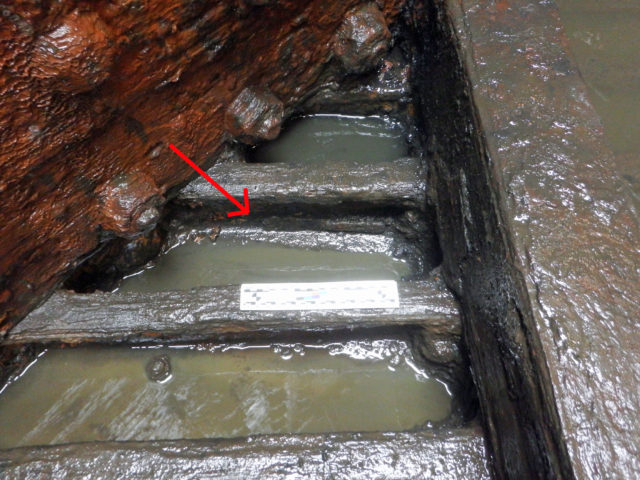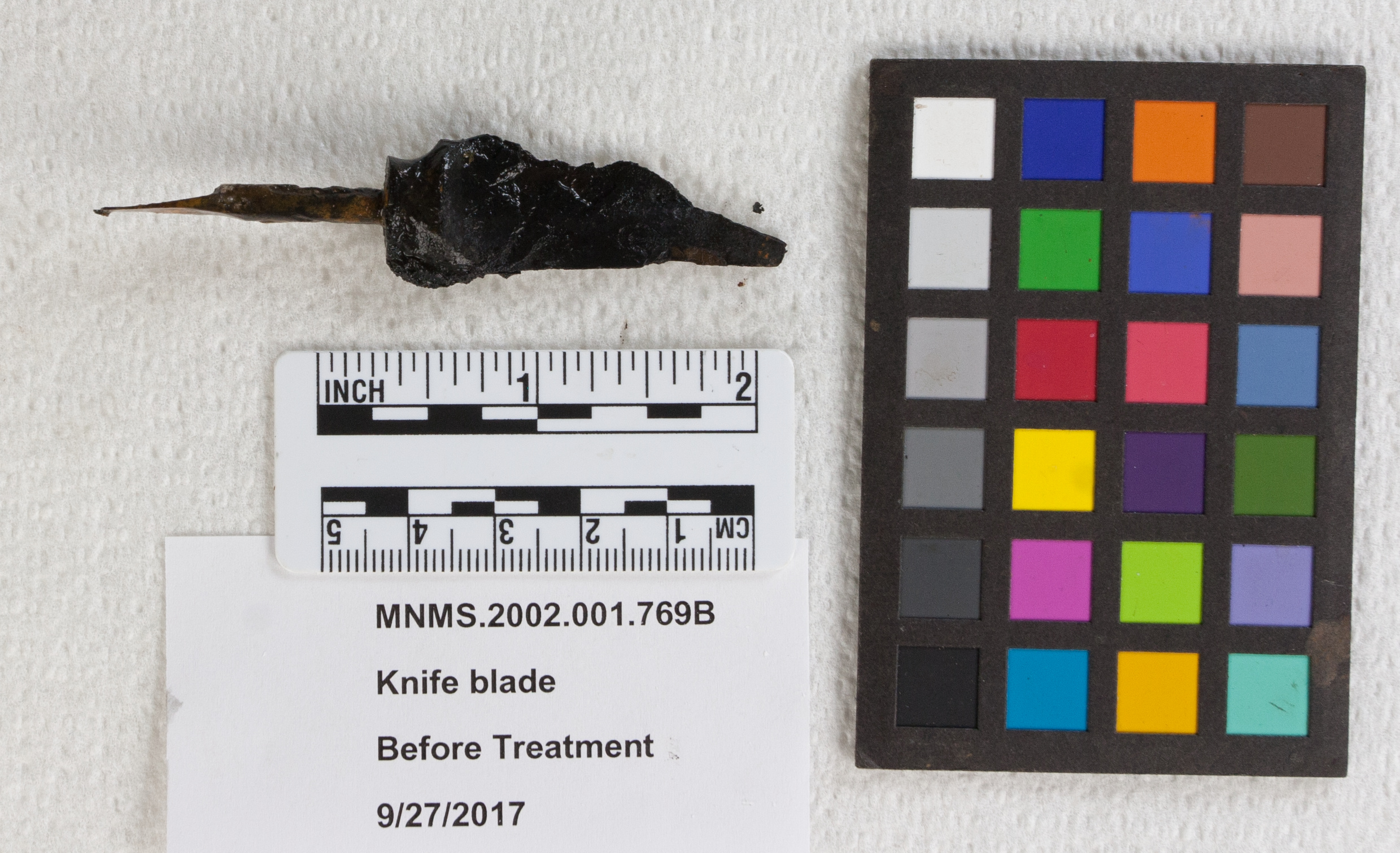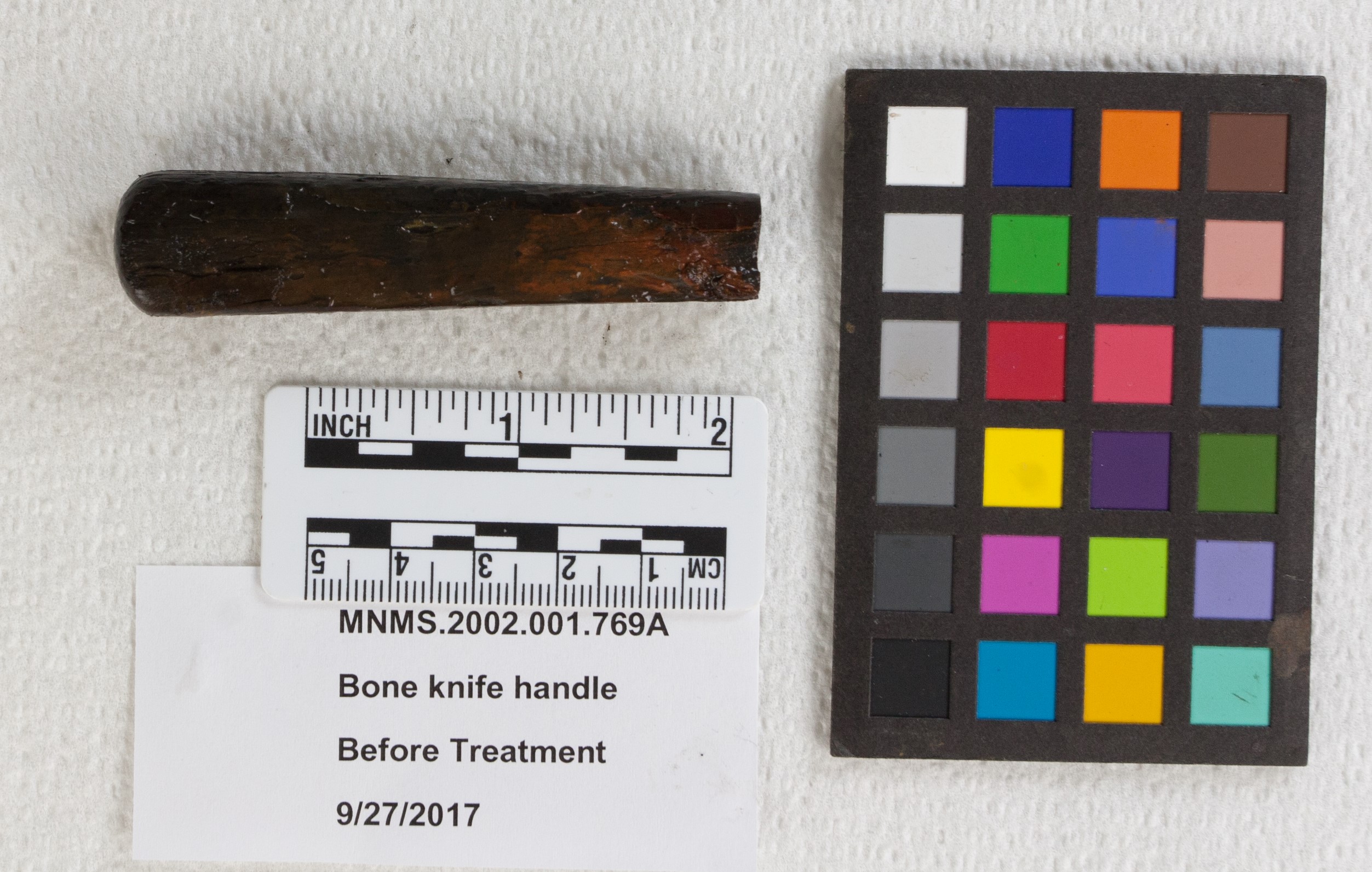With most of our staff working from home these days, we haven’t been able to work on objects in the lab as much as we would like. But, I thought I would update you all on some work I completed back in March.
Some of you may remember a blog post from way back in 2017, when I found a bone-handled knife in the concretion of the turret. While the conservation department had found many objects and items in the turret before, this came as a bit of a surprise. Much of the concretion had already been removed from the turret, and we didn’t think there were many places left for objects to hide. But we were wrong! Hidden in the rails of the railroad tracking that were used to construct the ceiling of the turret was a knife!
The knife was excavated using small hand tools, including bamboo skewers, dental tools and scalpels.
Well, I am proud to announce that the conservation treatment of the knife is half-way done! I’m sure you’re thinking “Half-way?? But it’s been three years!?!” That, dear readers, is the tricky bit about archaeological conservation. Many objects can take years to complete treatment, and you do not often get immediate gratification for your work. This is due to a number of factors, but the main one for us Monitor conservators is due to salts. When artifacts are placed in salt water for an extended period of time, salts (or chloride ions) will absorb into the objects. The longer the object is in the water, the more salts creep inside. And this can be devastating for many artifacts. Salts are the main cause of corrosion on iron artifacts. If the salts are not removed, iron artifacts can corrode while on display or in storage. So, we have to wait until all the salts are removed from the object before we can begin the next steps in treatment.

The knife blade and handle were easily separated, which is very fortunate. Bone and iron have completely different treatment paths. The best treatment for iron can be damaging to bone, and vice versa. So the fact that they were easily separated makes the conservation process much less complicated.
The iron blade and tang were cleaned using bamboo skewers and brushes. Since then, it has been desalinating in a chemical solution that prevents corrosion. I regularly monitor the salt levels. When the salts are fully removed from the blade, I will dry the object and apply a protective coating that prevents corrosion. This will aid in the preservation of the blade during storage and display.
The bone handle was cleaned using bamboo skewers and brushes. It was also chemically cleaned to remove iron staining on the bone, caused by iron corrosion. These chemicals were rinsed away using pure water. The handle was then consolidated. Consolidation is a common conservation method which injects a very dilute adhesive into an object. The adhesive fills cracks and weak points inside the object, making it stable from the inside out. Once the consolidating adhesive was fully immersed through the knife handle, the handle was air-dried.
This process can be especially important for waterlogged organics. As you’ll see with the bone knife, sometimes organics, like bone, can degrade so much that the water and iron corrosion is what is holding it together in the end. Since both water and corrosion have to be removed from the bone handle, it can be very weak afterwards. The consolidation helps strengthen it again.

The handle is now finished and in storage. Hopefully, the knife blade will complete desalination soon, and can finish conservation in the near future. I hope you have found this blog interesting, and it helps explain a bit why a conservation process can take such an extended time. Stay safe!



